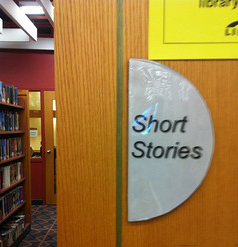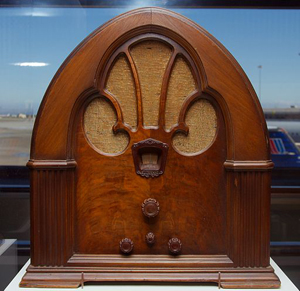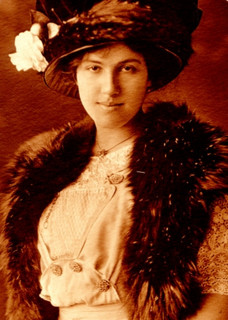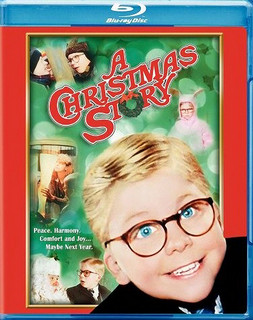
Source: Short Story Shelves, cropped, Canucklibrarian, Flickr
A short story is “an invented prose narrative shorter than a novel” and for our purposes, longer than a tweet. No matter what the length, short stories tell of an event or a series of connected events for the interest of the reader. The elements of plot, conflict, character, setting, and theme distinguish short stories from other types of writing such as character sketches, incidents, personal histories, or anecdotes. First listen to this rhapsodic overview of the five key elements in a short story.
Before you begin writing, it’s not only important to know the elements of a short story, but also to be able distinguish a short story from other prose forms. For instance, which of these two autobiographical incidents would make the best beginning for a short story?
Read the two excerpts that follow and decide which one seems like it is laying the groundwork for subsequent action.

Source: Philco cathedral radio, Gregory F. Maxwell, Wikimedia
Every day when I was a kid I’d drop anything I was doing, no matter what it was—stealing wire, having a fistfight, siphoning gas—no matter what, and tear like a blue streak through the alleys, over fences, under porches, through secret shortcuts, to get home not a second too late for the magic time. My breath rattling in wheezy gasps, sweating profusely from my long cross-country run I’d sit glassy-eyed and expectant before our Crosley Notre Dame Cathedral model radio.

Source: Source: Chinese Edwardian Aristocrat,
Helen von Mott, Flickr
Sometimes, when we kids came home from school, Mrs. Rossiter, the housekeeper, would meet us in the hall and place a warning finger on her lips. We knew what that meant. We must be on our best behavior. The wealthy Mrs. Murgatroyd was calling on Mother. We would be ushered into the Presence, Mother would tell us to stop using our sleeves as a handkerchief, and then Mrs. Murgatroyd would laugh and say, “Oh Annie, let the poor children alone. Sure, you’re only young once.” Then she would lift up her skirt to the knee, fish out a huge wallet from under her stocking, and give us each $2,000,000,000.
Both selections read like first-person accounts of childhood; both are written with the same purpose, to amuse. In the second excerpt, Frank Sullivan supposedly recalls his own childhood in the gas-lit streets of New York. His recollections include characters like Grandmamma Satterthwaite, who at 87 skipped rope 422 times without stopping, a teacher named Hattie Pumplebutt, and the well-heeled Mrs. Murgatroyd. Based on the outrageous names of his characters, we can infer that Sullivan doesn’t always stick to the facts. It’s implausible that a wealthy visitor would carry such a large sum of money in her stocking to dole out to kids. Despite the monetary exaggeration, however, we get the sense that while this is an amusing anecdote, it’s told without the rising tension of a short story.

Source: A Christmas Story at Winterfest,
pensacolawinterfest, Flickr
The first selection is by Jean Shepherd, whose story “Red Ryder Nails the Hammond Kid” inspired the movie A Christmas Story. His writing leaves you with questions. For example, you might wonder what radio program attracts a faithful fan.
Based on the narrator’s enthusiasm, you also know something exciting will happen, but you don’t know what. As a result of tension in the rising action, Shepherd helps you anticipate what’s coming next and entices you to read more. This is the beginning of a short story.
As you continue thinking about the elements of a short story and the two examples above, decide which of the following has the least potential to become a short story. After reading each selection, click on the one that is least likely to serve as the beginning of a short story.